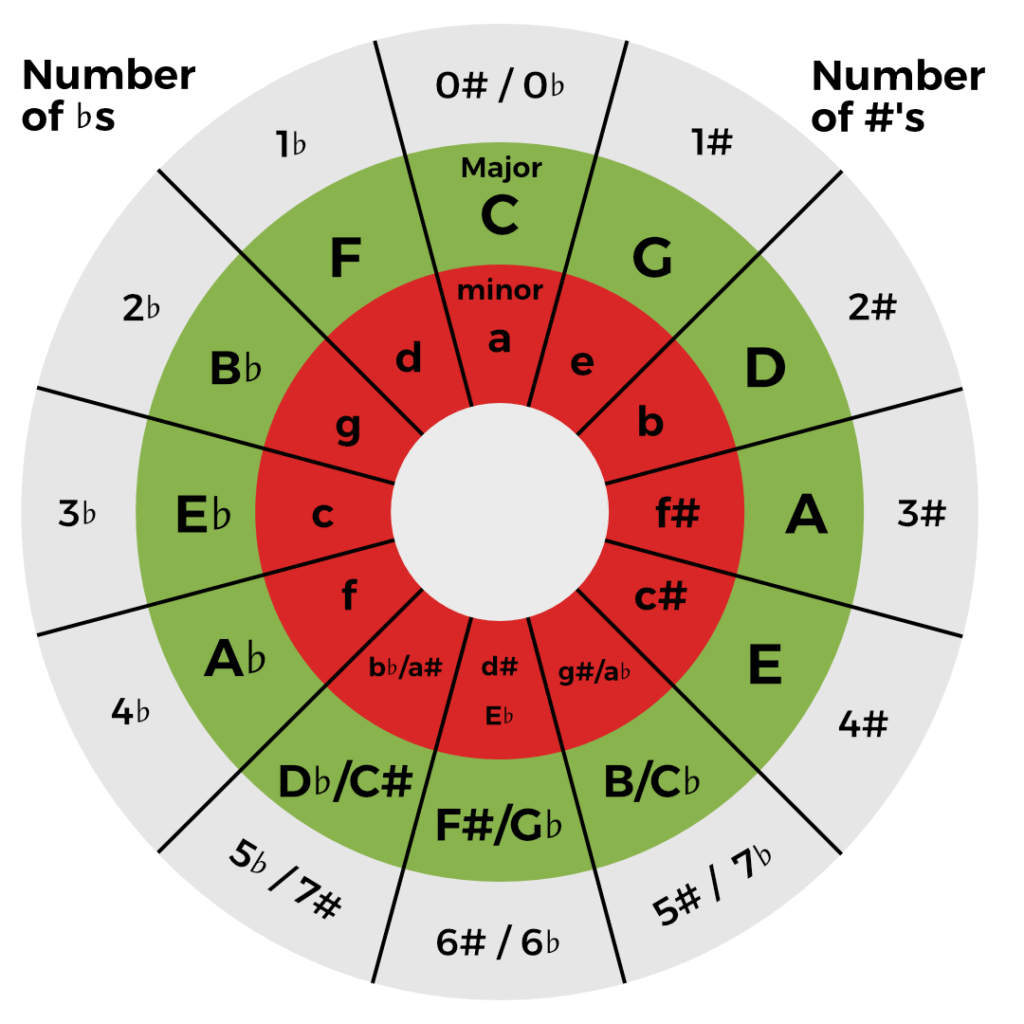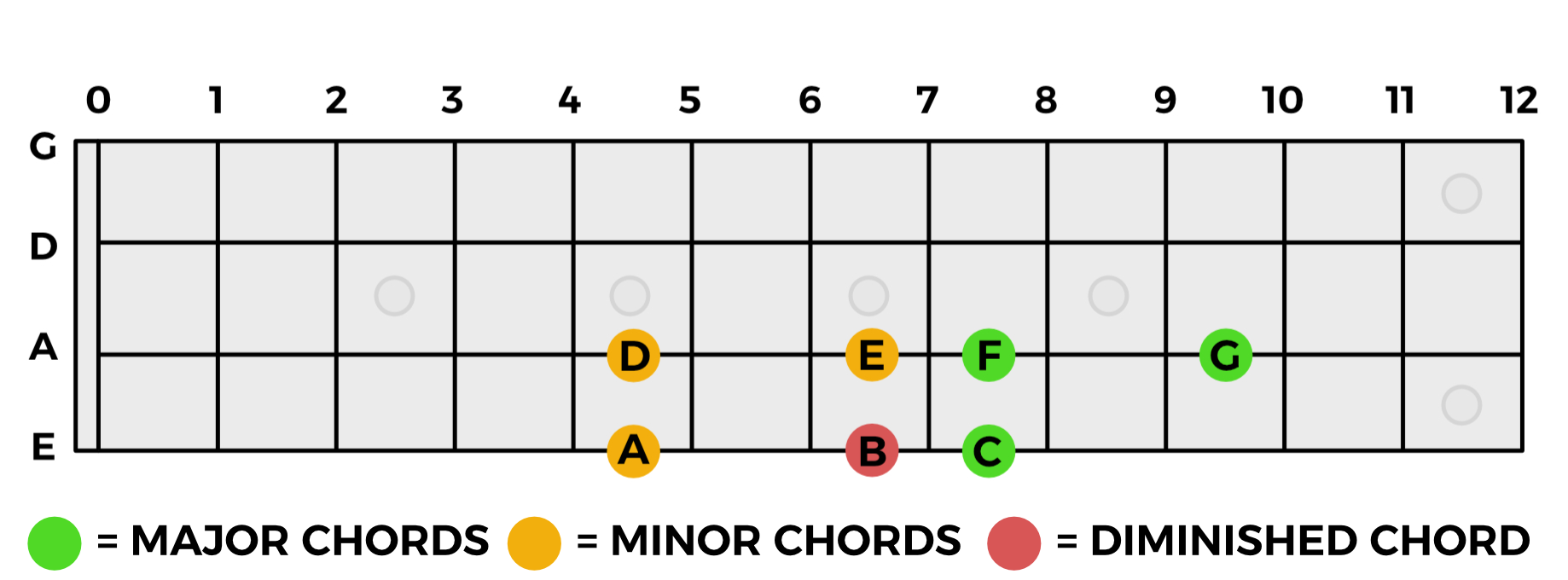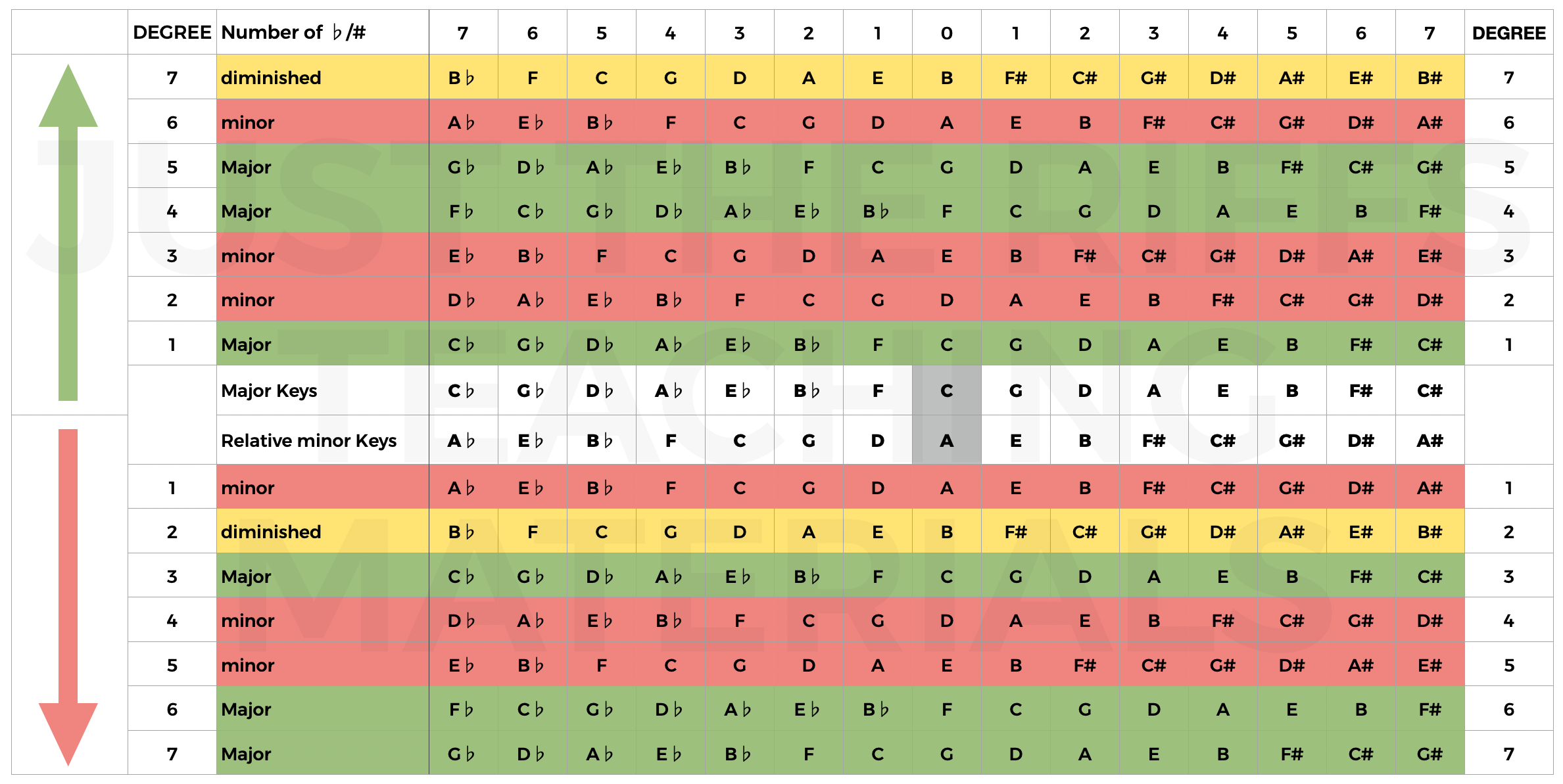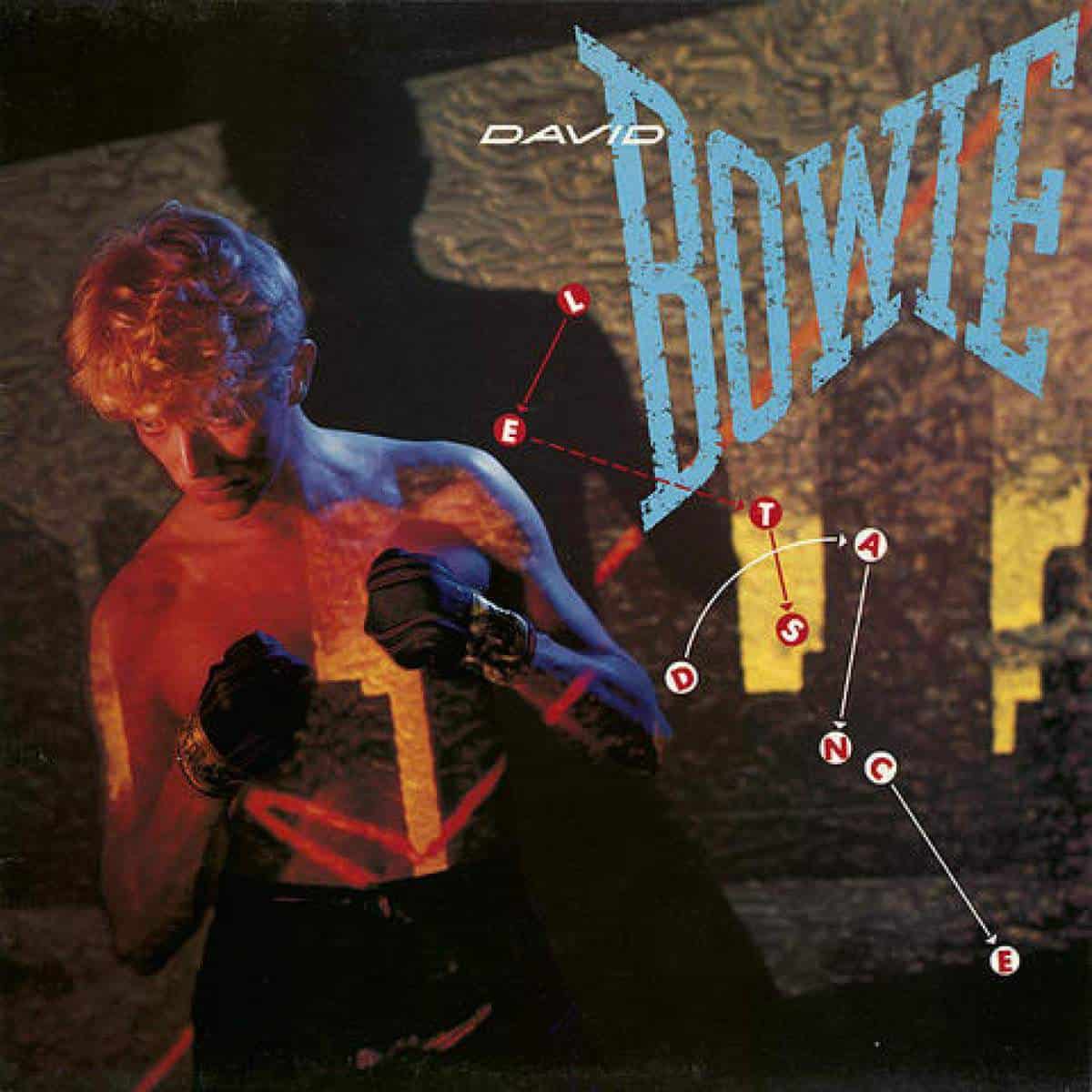
So, the "Circle of Fifths"...
This Music Theory tool has taken on an almost mythical but divisive status with people swearing that if you don't know it and use it you're a failure and people who've been successfully playing for decades and never even heard of it...
It is a very useful tool somethings (showing the order of the Keys/Scales, how many #'s and ♭'s are in each, the Major and Relative minors etc) but as a tool for finding the Chords and Notes in a Scale or Key, for me, it doesn't logically map to what it's describing.
Let's take a look at what it is and how it works.
The Co5's is a visually efficient way of representing "certain" data but not very efficient for others.
Where it's good, it shows the order of the Keys, both Sharps and Flats, and lists the number of Sharps and Flats in each one as there are sequences and the Sharps and Flats rise in number 1 by 1.
Go clockwise and you have all the Sharp Majors and their Relative minors; go countclockwise and you have all the Flat Majors and their Relative minors.
It's a clear table of sorts showing the relationship between Major Keys and their Relative minors (it doesn't explain that relationship or suggest how it might be derived, just shows it...)
Aaaaaaaaaand that's about it.
The way it presents these data doesn't relate to the bass in anyway. But there is a way to learn the order of the Keys on the bass fretboard and you can learn it here
I'm sure the Co5's has uses for songwriting (I'm not a songwriter so I can't speak to those) but to use it requires memorising a host of "to get this do this, this and then this...", "to get that, go x to the right then y to the left..." and so on.
As I say, I'm sure it has it's uses but as a data delivery method it's of no use to me (and I suspect no used to a lot you either).
When we teach students we tell them to learn their Scales. Scales are linear and make use of clearly defined sequences of both letters and numbers.
If a student learns that C Major is C-D-E-F-G-A-B and that each note has a Number/Degree 1-7, that each Note/Number/Degree has a Chord built on top of it and that ALL Major Scales follow the same pattern of Chords, M-m-m-M-M-m-dim, as soon as they're presented with the C05's there's an immediate "?!?" response...
On the Co5s, the notes displayed aren't laid out in any way that corresponds to the Scale forms they've been learning.

There are 12 Tones in the Equal Temprament Scale so it maps nicely to a "clock-like" format with C at the 12 O'clock position.
As mentioned earlier, we tell students to learn the Major and minor Scales but when faced with the Co5's, to find the notes of of C Major you need:
I appreciate that the Co5's isn't strictly a Scales tools but just being presented with it after learning your Major and minor Scale patterns and intervals, this thing makes no real sense...
If you can explain if this is a useful way to think when you're standing on stage and someone's calling a tune then you're a better music nerd than I am... 🤣
There has to be a better way to represent all this data AND the Chords of the Major and minor Scales all at once?
Well, there is...

So, what's happening here? We're going to use a traffic light system: Green, Yellow and Red. Start on the Green, move to the Yellow and finish the pattern on the Red
If you start on any note, in this instance it's C, and follow the pattern of the Green notes, you will land on the Root notes of ALL 3 Major chords in the Scale (C-F-G which is also 1-4-5 in the Nashville Number System).
If you then move DOWN the neck by 3 frets (towards the headstock) and make the same pattern using the Yellow dots, you will land on the Root notes of ALL 3 minor chords in the Major Scale (A-D-E which are 6-2-3 in the Nashville Number System)
Then you close that box shape with the Red dot for the random, "odd one out", Dimished Chord that you'll almost certainly never use outside of Jazz.
Let's apply this shape to another Key and see if it works.
Lets start on A♭ and work through the scale of A♭ Major.

We're in A♭ Major (A♭-B♭-C-D♭-E♭-F-G) so we start on A♭ at the 4th fret on the E String and play the 3 Green notes which gives us A♭-D♭-E♭ which are the Root notes of the Major Chords in the Key of A♭ Major.
Again, these are the 1-4-5 chords of the Nashville Number System.
Then we move down 3 frets towards the headstock and we're on F. We play the 3 Yellow notes, F-B♭-C which gives us the Root notes of all the minor Chords in A♭ Major.
The we close the box with to get the Diminished Chord, G.
Here's a useful little sidenote: when you start this pattern on the Root note of the Key and move down 3 frets to get to the Root notes of the minor chords, the note you're landing on is the root note of the Relative minor Key for whatever Major Key you're in.
In C, in the first example, we start on C and move back 3 frets to get the minor chords. Doing this, we land on A which is the Root note of the Relative minor Key of C Major.
So while you've by learning this pattern you're also learning something else by stealth! Fun eh? (Maybe for nerds like me...)
But this pattern is even more useful because it can teach you all the Chords of the minor Scale too...

Let's take the Scale/Key of B minor (B-C#-D-E-F#-G-A).
For this we take our pattern and start on the Green dots as before but reverse our thinking and treat the Green dots as the minor Chords
If we start on B and play the Green dots we get all 3 of the minor Chords in B minor (B-E-F# which is the minor 1-4-5 in the Nashville Number System).
Then, if we move UP the neck, towards the pickups/bridge, by 3 frets (remember we move DOWN towards the headstock in the Major Keys) and play the Yellow dots, we get the 3 Major Chords of B minor (D-G-A which are 3-6-7 in the Nashville Number System).
To get that pesky Diminished Chord, we simply move back DOWN one fret.
This pattern isn't quite as elegant as the Major one, with that little nudge back for the Diminished Chord, but it works.
As a little bonus and from a different post that you can read here, here are some graphics showing how to find the ALL the Sharp and Flat Major and minor Keys on the fretboard.
Because I don't really vibe with the Circle of Fifths I created a "Look Up" table that brings together:
For the Chords, it's colour coded by type: Green for Major, Red for minor and Yellow for Diminished (I know, that doesn't match the colour system in the other images, they were made quite some time apart and in that time I appear to have changed my mind!)
To use it:
To me, this is a much more usable form for this data than some clock-like idea that you need to leap about all over to find what you're after.
I hope that this makes sense and you can see it as more usuable. Feel free to download it and use it in your own learning or as a teaching aid for your students if you connect with it.

The "Circle of Fifths (5ths)" is a very useful tool if it makes sense with how you conceptualise music and think about it but there are other more effective, "bass in hand" ways to learn the Chords of the Scales/Keys than that.
I hope this one makes sense and demystifies things a bit.
If you do get some value from this and you feel kind and generous, perhaps buy me a coffee? Any and all donations are gratefully received and channeled back into keeping the site going.
This is not a get rich scheme of a site by any measure! Thank you.









